Fred Hoyle An observer of the world and a ponderer on its problems ...
Books in Print
Fiction
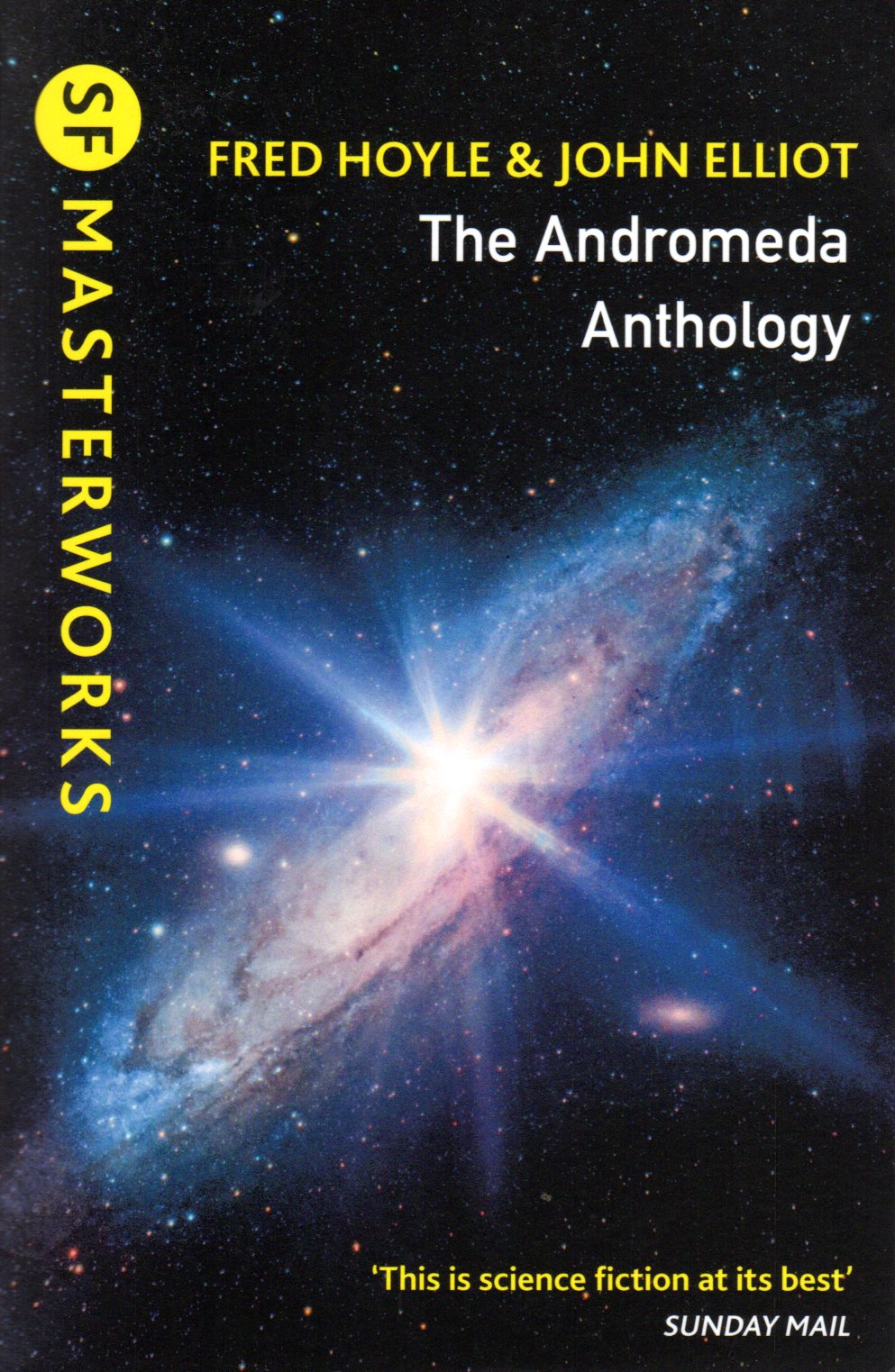
Published Date OCTOBER 2020
The close-knit group of scientists who worked at the new radio telescope are shocked to receive a mysterious signal from the heart of the Andromeda galaxy. Working with a mathematician Christine Jones, Dr John Fleming interprets the signal as the instructions to build a super-computer. When the computer begins to relay the information it receives from Andromeda, scientists find themselves possessing knowledge perviously unknown to mankind, knowledge that could threaten the security of human life itself.
The Andromeda Anthology contains the acclaimed duology A for Andromeda and The Andromeda Breakthrough co-written with John Elliot.
The close-knit group of scientists who worked at the new radio telescope are shocked to receive a mysterious signal from the heart of the Andromeda galaxy. Working with a mathematician Christine Jones, Dr John Fleming interprets the signal as the instructions to build a super-computer. When the computer begins to relay the information it receives from Andromeda, scientists find themselves possessing knowledge perviously unknown to mankind, knowledge that could threaten the security of human life itself.
The Andromeda Anthology contains the acclaimed duology A for Andromeda and The Andromeda Breakthrough co-written with John Elliot.
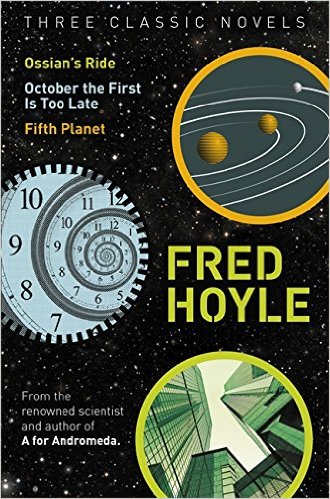
Publishing Date APRIL 2016
In addition to being the man who coined the term 'the Big Bang', world-renowned astronomer Sir Fred Hoyle also produced a fine body of science fiction. This omnibus contains three of his SF novels: Ossian's Ride, October the First Is Too Late & Fifth Planet, co-written with his son, Geoffrey Hoyle.
Ossian's Ride: The year is 1970. Sealed behind an impenetrable barrier in the south of Ireland, the Industrial Corporation of Eire startles the rest of the world with its efficiency, its brilliance . . .
October the First Is Too Late: Unusual solar activity has played havoc with terrestrial time: England is in the '60's, but in France, it is 1917 and WWI is still raging in western Europe . . .
Fifth Planet: Another star is due to pass close to the sun, close enough for conventional spacecraft to reach it. Signs of chlorophyll are detected on one of the worlds, suggesting that it supports life. Rival Soviet and US expeditions are launched to visit it. But what will they find on the 'Fifth Planet'?
In addition to being the man who coined the term 'the Big Bang', world-renowned astronomer Sir Fred Hoyle also produced a fine body of science fiction. This omnibus contains three of his SF novels: Ossian's Ride, October the First Is Too Late & Fifth Planet, co-written with his son, Geoffrey Hoyle.
Ossian's Ride: The year is 1970. Sealed behind an impenetrable barrier in the south of Ireland, the Industrial Corporation of Eire startles the rest of the world with its efficiency, its brilliance . . .
October the First Is Too Late: Unusual solar activity has played havoc with terrestrial time: England is in the '60's, but in France, it is 1917 and WWI is still raging in western Europe . . .
Fifth Planet: Another star is due to pass close to the sun, close enough for conventional spacecraft to reach it. Signs of chlorophyll are detected on one of the worlds, suggesting that it supports life. Rival Soviet and US expeditions are launched to visit it. But what will they find on the 'Fifth Planet'?
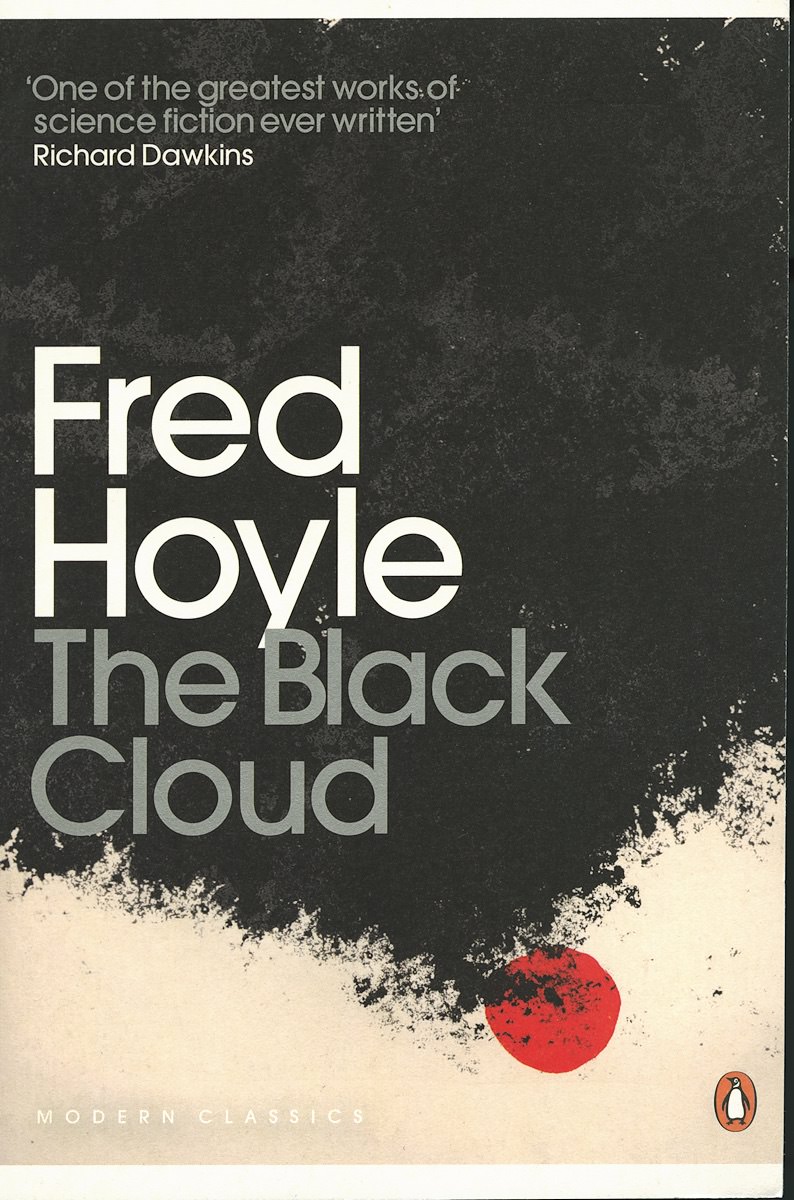
'A thrilling book ... like early Wells
at his best'
New Statesman
As soon as a strange dark patch in the sky is spotted by a young astronomer,
it is clear something is wrong. The huge black cloud is unlike anything he has ever seen - and it's headed straight for the solar system. If it continues on its course, it will block out the sun's rays
and wipe out life on Earth. As panic and riots ensue, desperate world leaders assemble a crack team of scientists - including the maverick Professor Kingsley, the pipe-smoking Doctor Marlowe and the taciturn Russian Alexandrov - to stop the cloud. But as they discover more about its true nature, they are forced to rethink everything they know about humankind's place in the Universe.
In The Black Cloud, renowned astronomer Fred Hoyle blends scientific expertise with a gripping apocalyptic thriller, to create a frighteningly real picture of a planet facing extinction.
at his best'
New Statesman
As soon as a strange dark patch in the sky is spotted by a young astronomer,
it is clear something is wrong. The huge black cloud is unlike anything he has ever seen - and it's headed straight for the solar system. If it continues on its course, it will block out the sun's rays
and wipe out life on Earth. As panic and riots ensue, desperate world leaders assemble a crack team of scientists - including the maverick Professor Kingsley, the pipe-smoking Doctor Marlowe and the taciturn Russian Alexandrov - to stop the cloud. But as they discover more about its true nature, they are forced to rethink everything they know about humankind's place in the Universe.
In The Black Cloud, renowned astronomer Fred Hoyle blends scientific expertise with a gripping apocalyptic thriller, to create a frighteningly real picture of a planet facing extinction.
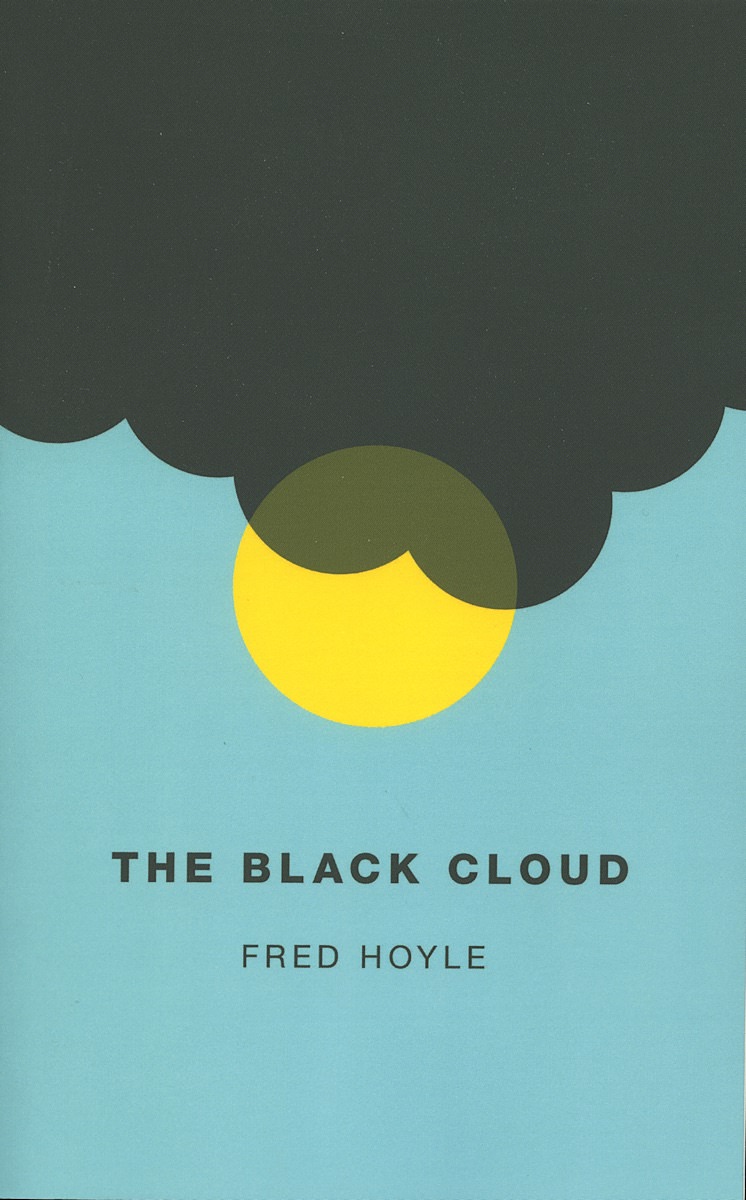
“One of the greatest works of science fiction ever written.” – Richard Dawkins
“Without a question the most intelligently written science fiction story I have ever read . . . A terrific yarn.” – Charlotte Observer
“An eerie story which demands the reader’s attention from start to finish.” – Denver Post
Astronomers in England and America have made a terrifying discovery: an ominous black cloud the size of Jupiter is travelling straight towards our solar system. If their calculations are correct, the cloud’s path will bring it between the Earth and the Sun, blocking out the Sun’s rays and threatening unimaginable consequences for our planet. With the fate of every living thing on Earth in the balance, world leaders assemble a team of brilliant scientists to figure out a way to stop the cloud. But when they uncover the truth behind its origins, they will be forced to reconsider everything they think they know about the nature of life in the universe . . .
A landmark of British science fiction, The Black Cloud (1957) was the first novel by world-renowned astronomer Sir Fred Hoyle (1915-2001), who used his own scientific background to create a frighteningly real apocalyptic thriller in which, Hoyle said, “there is very little that could not conceivably happen.” Long recognized as a classic in Great Britain, Hoyle’s novel returns to print in the U.S. for the first time in over 40 years in this edition, published to coincide with the centennial of the author’s birth and featuring a new foreword by Geoffrey Hoyle.
“Without a question the most intelligently written science fiction story I have ever read . . . A terrific yarn.” – Charlotte Observer
“An eerie story which demands the reader’s attention from start to finish.” – Denver Post
Astronomers in England and America have made a terrifying discovery: an ominous black cloud the size of Jupiter is travelling straight towards our solar system. If their calculations are correct, the cloud’s path will bring it between the Earth and the Sun, blocking out the Sun’s rays and threatening unimaginable consequences for our planet. With the fate of every living thing on Earth in the balance, world leaders assemble a team of brilliant scientists to figure out a way to stop the cloud. But when they uncover the truth behind its origins, they will be forced to reconsider everything they think they know about the nature of life in the universe . . .
A landmark of British science fiction, The Black Cloud (1957) was the first novel by world-renowned astronomer Sir Fred Hoyle (1915-2001), who used his own scientific background to create a frighteningly real apocalyptic thriller in which, Hoyle said, “there is very little that could not conceivably happen.” Long recognized as a classic in Great Britain, Hoyle’s novel returns to print in the U.S. for the first time in over 40 years in this edition, published to coincide with the centennial of the author’s birth and featuring a new foreword by Geoffrey Hoyle.
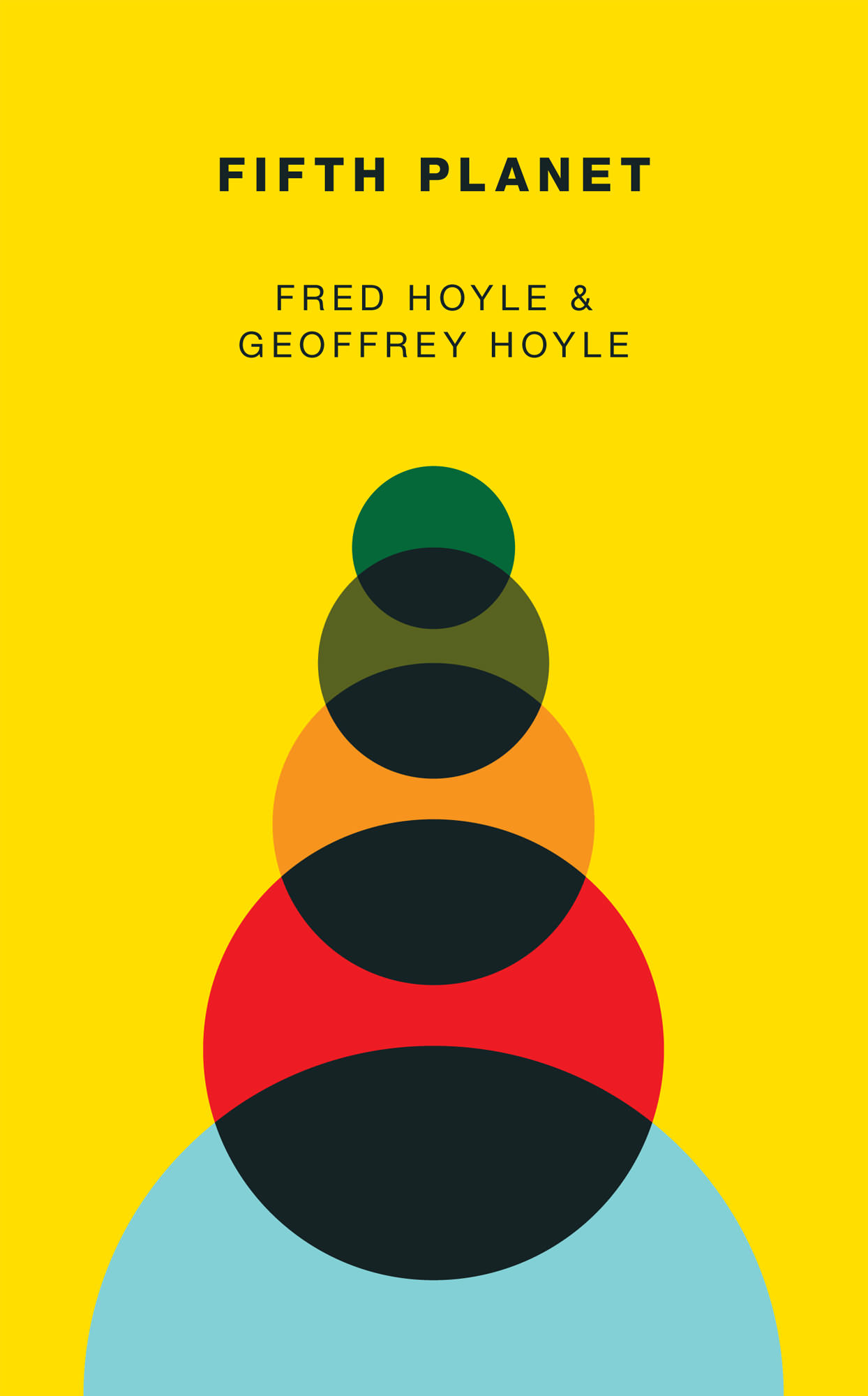
FIFTH PLANET:
A planetary system, consisting of a star and five planets, is travelling through our galaxy and will pass close to Earth. The four largest planets are gaseous, but the fifth, named Achilles, appears capable of supporting life. Two rival expeditions - one Anglo-American and one Russian - set out to land on Achilles and explore its mysteries. But almost from the moment of their arrival things begin to go terribly wrong ... and when they return to Earth, something not human will be coming back with them.
One of the most exciting novels by world-renowned scientist Sir Fred Hoyle (1915-2001) and Geoffrey Hoyle, Fifth Planet (1963) is a thrilling science fiction tale that ranks alongside Hoyle's masterpiece The Black Cloud.
'An exciting book for all science fiction enthusiasts ... will leave the reader wondering about our future life on earth.' - Evening Journal
'Fred Hoyle, a celebrated astronomer, is a man of vast imagination ... the story is sharp, clear and full of suspense.' - Washington (D.C.) Evening Star
'A mature performance ... the best so far from the Hoyle stable.' - Sunday Times
A planetary system, consisting of a star and five planets, is travelling through our galaxy and will pass close to Earth. The four largest planets are gaseous, but the fifth, named Achilles, appears capable of supporting life. Two rival expeditions - one Anglo-American and one Russian - set out to land on Achilles and explore its mysteries. But almost from the moment of their arrival things begin to go terribly wrong ... and when they return to Earth, something not human will be coming back with them.
One of the most exciting novels by world-renowned scientist Sir Fred Hoyle (1915-2001) and Geoffrey Hoyle, Fifth Planet (1963) is a thrilling science fiction tale that ranks alongside Hoyle's masterpiece The Black Cloud.
'An exciting book for all science fiction enthusiasts ... will leave the reader wondering about our future life on earth.' - Evening Journal
'Fred Hoyle, a celebrated astronomer, is a man of vast imagination ... the story is sharp, clear and full of suspense.' - Washington (D.C.) Evening Star
'A mature performance ... the best so far from the Hoyle stable.' - Sunday Times
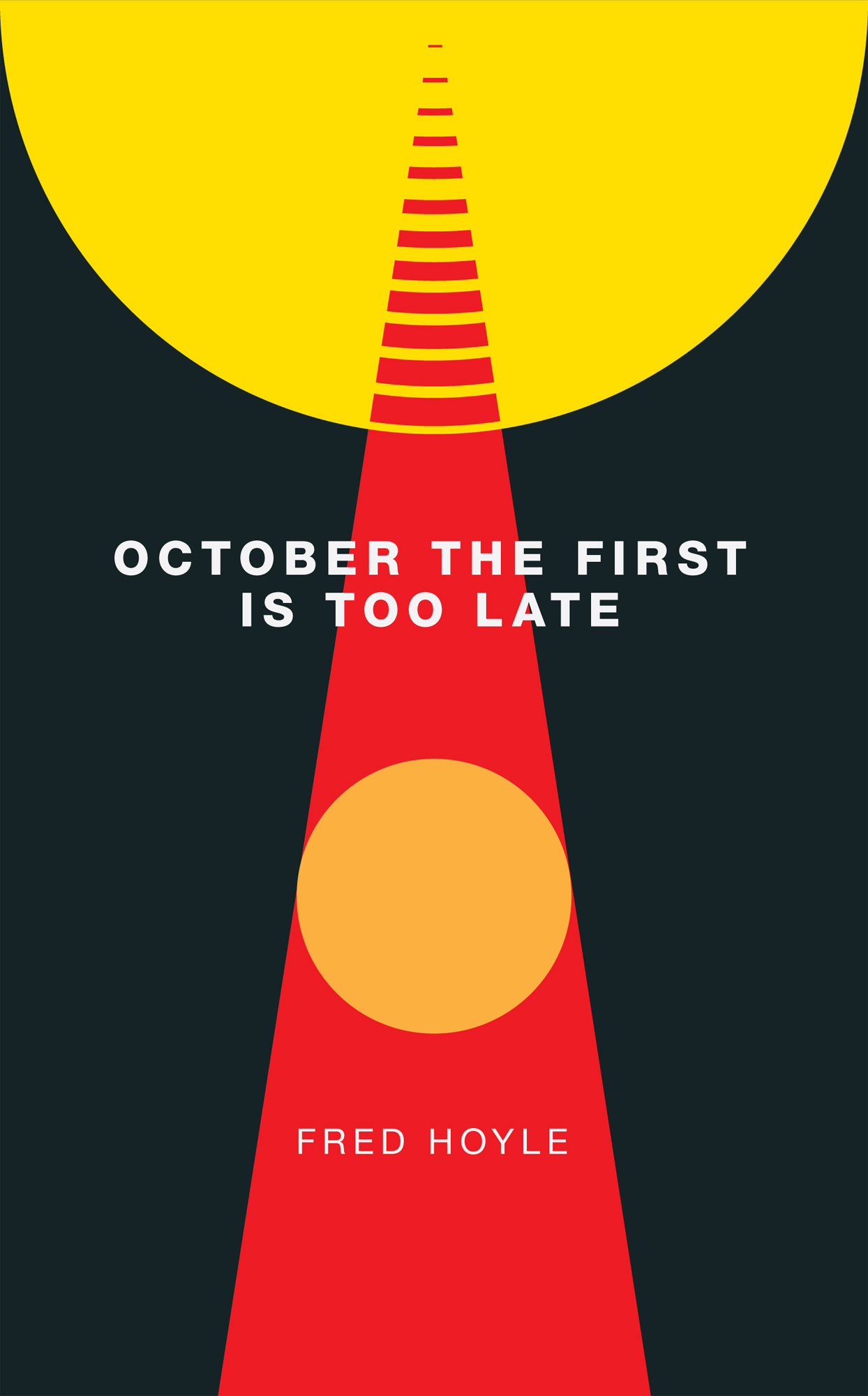
OCTOBER THE FIRST:
Renowned scientist John Sinclair and his old school friend Richard, a celebrated composer, are enjoying a climbing expedition in the Scottish Highlands when Sinclair disappears without a trace for thirteen hours. When he resurfaces with no explanation for his disappearance, he has undergone an uncanny alteration: a birthmark on his back has vanished. But stranger events are yet to come: things are normal enough in Britain, but in France it's 1917 and World War I is raging, Greece is in the Golden Age of Pericles, America seems to have reverted to the 18th century, and Russia and China are thousands of years in the future.
Against this macabre backdrop of coexisting time spheres, the two young men risk their lives to unravel the truth. But truth is in the mind of the beholder, and who is to say which of these timelines is the 'real' one? In October the First Is Too Late (1966), world-famous astrophysicist Sir Fred Hoyle (1915-2001) explores fascinating concepts of time and consciousness in the form of a thrilling science fiction adventure that ranks among his very best.
'Fred Hoyle is the John Buchan of science fiction. His fantasies are not only rooted in scientific possibility but are told at a galloping pace.' - Julian Jebb, Sunday Times
'Fine storytelling.' - Kirkus Reviews
Renowned scientist John Sinclair and his old school friend Richard, a celebrated composer, are enjoying a climbing expedition in the Scottish Highlands when Sinclair disappears without a trace for thirteen hours. When he resurfaces with no explanation for his disappearance, he has undergone an uncanny alteration: a birthmark on his back has vanished. But stranger events are yet to come: things are normal enough in Britain, but in France it's 1917 and World War I is raging, Greece is in the Golden Age of Pericles, America seems to have reverted to the 18th century, and Russia and China are thousands of years in the future.
Against this macabre backdrop of coexisting time spheres, the two young men risk their lives to unravel the truth. But truth is in the mind of the beholder, and who is to say which of these timelines is the 'real' one? In October the First Is Too Late (1966), world-famous astrophysicist Sir Fred Hoyle (1915-2001) explores fascinating concepts of time and consciousness in the form of a thrilling science fiction adventure that ranks among his very best.
'Fred Hoyle is the John Buchan of science fiction. His fantasies are not only rooted in scientific possibility but are told at a galloping pace.' - Julian Jebb, Sunday Times
'Fine storytelling.' - Kirkus Reviews
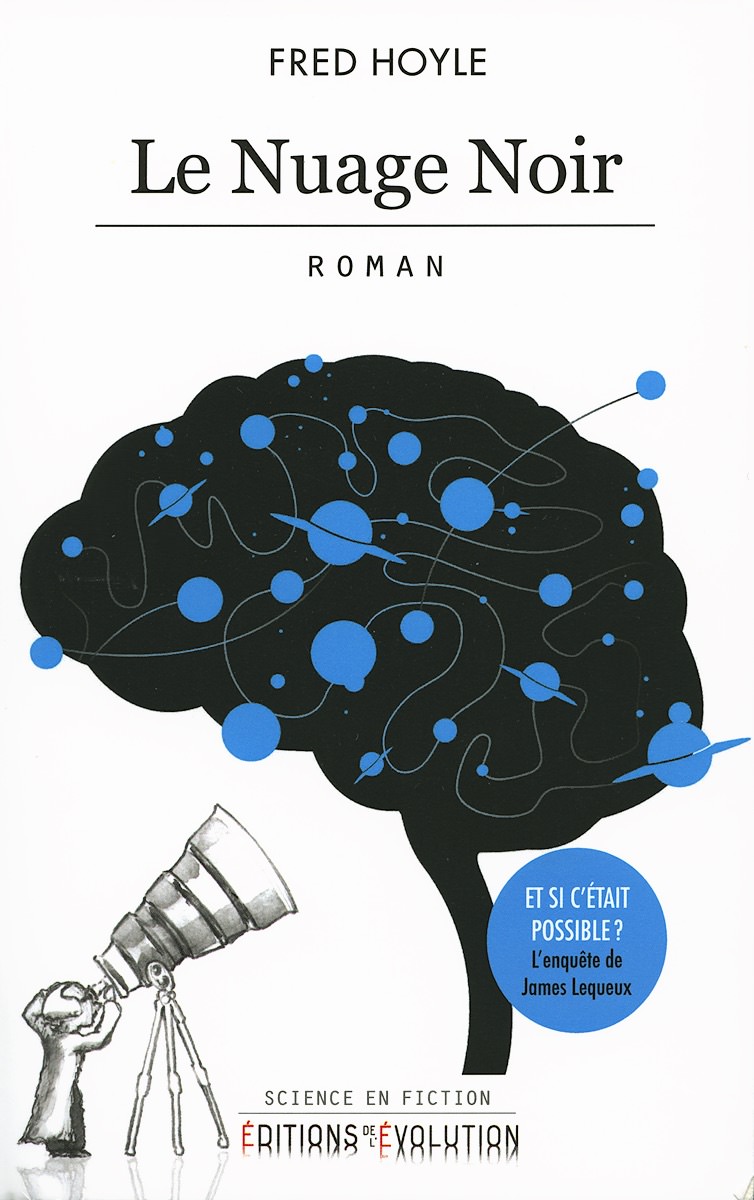
Le Nuage Noir
Traduit de l'anglais par Jean Quéval
Un objet, sphérique. Un nuage interstellaire, bombe gazeuse à l'échelle du système solaire fonçant droit sur nous et à toute vitesse. Menaçant de sa seule présence toute vie sur terre.
Quand autour de Chris une poignée d'astronomes aussitôt réunie l'ausculte, le sonde, observe son approche, c'est pire. Le Nuage déjoue toutes les prévisions. Il est contrôlé. Vivant, peut-être? Conscient?
Que faire? Et que faire contre la menace, non moins redoutable, de l'incurie politique? Machiavélisme et culot sidérant ne seront pas de trop face aux politiciens, Premier ministre en tête ... Chasser le Nuage. Stopper l'extinction de l'humanité.
Ce roman de 1957, dû à la plume alerte et visionnaire de l'astronome mondialement connu qu'était Fred Hoyle (c'est à lui qu'on doit le terme «big bang- l), nous met dans l'intimité du monde nocturne et en trépidation intellectuelle insatiable des astronomes. Et nous régale sans retenue d'un humour féroce aux dépens de nos politiciens, qui dans ces pages trouvent leur maître.
Un roman, une enquête
La science d'aujourd'hui désavouerait-elle le Nuage de Fred Hoyle? Que sait-on des formes de vie plausibles dans l'univers? James Lequeux, astronome émérite de l'Observatoire de Paris et lui-même spécialiste de la matière interstellaire, sonde en quelques pages les facultés d'anticipation du grand savant, quïl a d'ailleurs connu : nous n'en voyons que mieux comment lïmagination de l'écrivain joue de la science, et comment le savant joue de l'imaginaire.
Traduit de l'anglais par Jean Quéval
Un objet, sphérique. Un nuage interstellaire, bombe gazeuse à l'échelle du système solaire fonçant droit sur nous et à toute vitesse. Menaçant de sa seule présence toute vie sur terre.
Quand autour de Chris une poignée d'astronomes aussitôt réunie l'ausculte, le sonde, observe son approche, c'est pire. Le Nuage déjoue toutes les prévisions. Il est contrôlé. Vivant, peut-être? Conscient?
Que faire? Et que faire contre la menace, non moins redoutable, de l'incurie politique? Machiavélisme et culot sidérant ne seront pas de trop face aux politiciens, Premier ministre en tête ... Chasser le Nuage. Stopper l'extinction de l'humanité.
Ce roman de 1957, dû à la plume alerte et visionnaire de l'astronome mondialement connu qu'était Fred Hoyle (c'est à lui qu'on doit le terme «big bang- l), nous met dans l'intimité du monde nocturne et en trépidation intellectuelle insatiable des astronomes. Et nous régale sans retenue d'un humour féroce aux dépens de nos politiciens, qui dans ces pages trouvent leur maître.
Un roman, une enquête
La science d'aujourd'hui désavouerait-elle le Nuage de Fred Hoyle? Que sait-on des formes de vie plausibles dans l'univers? James Lequeux, astronome émérite de l'Observatoire de Paris et lui-même spécialiste de la matière interstellaire, sonde en quelques pages les facultés d'anticipation du grand savant, quïl a d'ailleurs connu : nous n'en voyons que mieux comment lïmagination de l'écrivain joue de la science, et comment le savant joue de l'imaginaire.
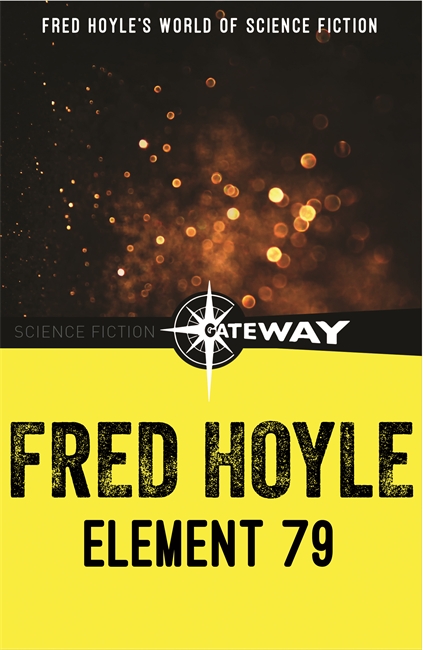
Can immortal man ever outwit the airlines? What if dumb animals could be trained to 'appreciate' the communications media of the human world? How does Number 38, Zone 11, respond when he sees a U.F.O? What happens to Slippage City when the Devil decides to think big?
These - plus a remarkable sex comedy - are some of the intriguing themes of Element 79, the new Hoyle galaxy that ranges the full scientific spectrum and beyond into the furthest reaches of the imagination. Author Fred Hoyle is an internationally renowned astronomer and much of his fiction is rooted in the realm of what is possible - scientifically and psychologically - on earth and in space, in the present and the future. His visions of his fellow humans is disquieting, hilarious, and sometimes frightening; his social commentary is often etched in acid. In Element 79 Mr Hoyle steps forward to take a backward glance at the world - deftly balancing his followers between the unreal and the real, between a chuckle and a shudder.
These - plus a remarkable sex comedy - are some of the intriguing themes of Element 79, the new Hoyle galaxy that ranges the full scientific spectrum and beyond into the furthest reaches of the imagination. Author Fred Hoyle is an internationally renowned astronomer and much of his fiction is rooted in the realm of what is possible - scientifically and psychologically - on earth and in space, in the present and the future. His visions of his fellow humans is disquieting, hilarious, and sometimes frightening; his social commentary is often etched in acid. In Element 79 Mr Hoyle steps forward to take a backward glance at the world - deftly balancing his followers between the unreal and the real, between a chuckle and a shudder.
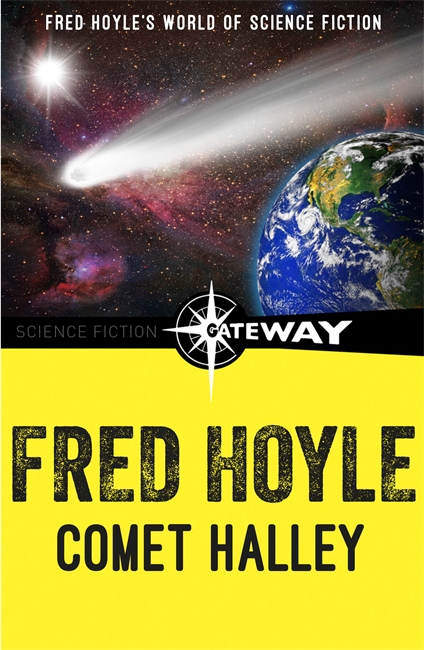
Returning to the Cavendish Laboratory in Cambridge after a spell at the nuclear research labs of CERN in Geneva, Professor Isaac Newton is plunged into the centre of a baffling mystery. One of his research students, Mike Howarth, has picked up strange signals on his satellite telemetry equipment, signals that appear to emanate from a passing comet. Not long after he has passed the vital data into Isaac Newton's hands, Howarth is found dead. Soon after that, it becomes clear that some people in very high places - including the Kremlin and the White House - are more than a little interested in the remarkable events taking place at the Cavendish. But with the arrival of that most majestic of all celestial bodies, Comet Halley, a third and infinitely more powerful superpower enters the scene. And the Comet's extraordinary intentions - not to mention its devastating methods of communicating them to Earth - promise a new dawn for humanity.
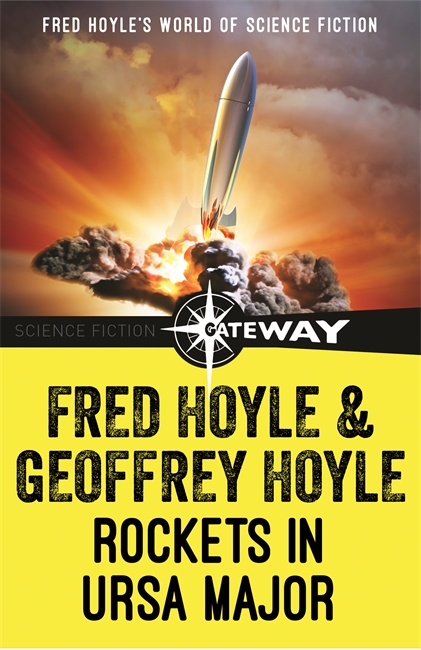
Originally written as a play and performed at the Mermaid Theatre, Easter 1962.
It is the early 20th century. Man is seeking signs of life elsewhere in the universe, but all exploratory ships have been lost without a trace - except for DSP15. Thirty years after leaving earth, and given up for lost, DSP15 suddenly appears on radar screens at the space station at Mildenhall, England. Her crew had been frozen to prevent ageing, and as the ship settles to a landing, Dr Richard Warboys eagerly awaits with other scientists for word of what DSP15 has found. But there is no crew, only a message scratched into a metal surface, signed by the captain: "If this ship returns to Earth, then mankind is in deadly peril - God help you - " And so Earth becomes accidentally involved in a cosmic battle against a virtually omnipotent alien power, in a story suspenseful and exciting from cover to cover.
It is the early 20th century. Man is seeking signs of life elsewhere in the universe, but all exploratory ships have been lost without a trace - except for DSP15. Thirty years after leaving earth, and given up for lost, DSP15 suddenly appears on radar screens at the space station at Mildenhall, England. Her crew had been frozen to prevent ageing, and as the ship settles to a landing, Dr Richard Warboys eagerly awaits with other scientists for word of what DSP15 has found. But there is no crew, only a message scratched into a metal surface, signed by the captain: "If this ship returns to Earth, then mankind is in deadly peril - God help you - " And so Earth becomes accidentally involved in a cosmic battle against a virtually omnipotent alien power, in a story suspenseful and exciting from cover to cover.
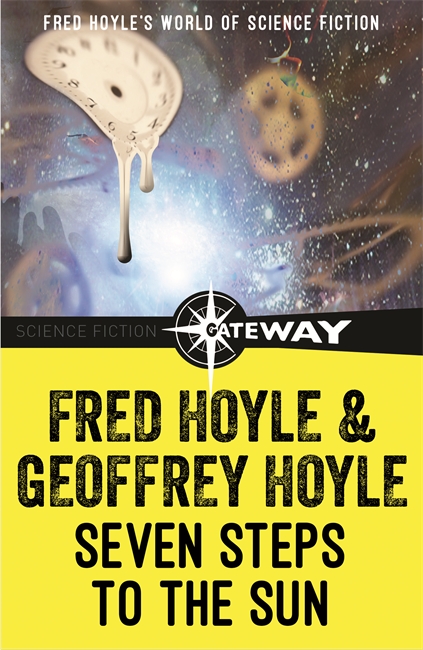
Mike Jerome, a likeable young TV writer, visits Professor Smitt, a physicist, who gives him an idea for a TV script: using some source of light, perhaps a laser beam, one could reduce the human structure to a form that could be transmitted into the future as electrical pulses - and thus create time travel.
On the way home Mike is hit by a taxi, and when he recovers he finds the date is 1979 - ten years in the future. This is but the beginning of a series of bewildering, fascinating ten year jumps. Mike is himself living the time change himself! At the end of each stop he tries to find his best friend, Pete Jones, a Negro jazz musician. Jumps to 1989, 1999 and so on, take Mike into such far-reaching places as London, the Northern Territory of Australia, California and the Italian Alps, for a rousing series of adventures in all sorts of bizarre circumstances. At the very end of this outstanding science fiction adventure by a noted father-son team, there is a slyly ambiguous twist which leaves the reader wondering...
On the way home Mike is hit by a taxi, and when he recovers he finds the date is 1979 - ten years in the future. This is but the beginning of a series of bewildering, fascinating ten year jumps. Mike is himself living the time change himself! At the end of each stop he tries to find his best friend, Pete Jones, a Negro jazz musician. Jumps to 1989, 1999 and so on, take Mike into such far-reaching places as London, the Northern Territory of Australia, California and the Italian Alps, for a rousing series of adventures in all sorts of bizarre circumstances. At the very end of this outstanding science fiction adventure by a noted father-son team, there is a slyly ambiguous twist which leaves the reader wondering...
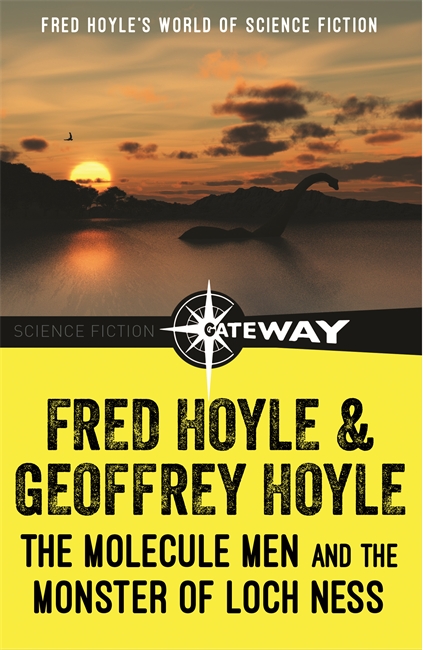
Dr John West, Cambridge don and private investigator, was present at the trial of an odd duck, R. A. Adcock, who was being most uncooperative in answering questions about a bank robbery. At length, Adcock had made a dash for it from the courtroom - through a glass window, and what should have been a three storey drop to the street. But suddenly, Adcock wasn't there, and at once a swarm of bees came into the courtroom.
Thus begins The Molecule Men, which takes many fascinating and terrifying turns to its chilling conclusion.
In the second story, the Monster of Loch Ness, Tom Cochrane, an independent scientist, determines to find out why the waters of Loch Ness are inexplicably warming up. What was it that caused the waters of the loch to pour up into the air like the worst rainstorm any of the observers had ever seen? What was at the bottom of the loch?
These two short novels by a celebrated father and son team will hold the interest of the science fiction fan from page one on.
Thus begins The Molecule Men, which takes many fascinating and terrifying turns to its chilling conclusion.
In the second story, the Monster of Loch Ness, Tom Cochrane, an independent scientist, determines to find out why the waters of Loch Ness are inexplicably warming up. What was it that caused the waters of the loch to pour up into the air like the worst rainstorm any of the observers had ever seen? What was at the bottom of the loch?
These two short novels by a celebrated father and son team will hold the interest of the science fiction fan from page one on.
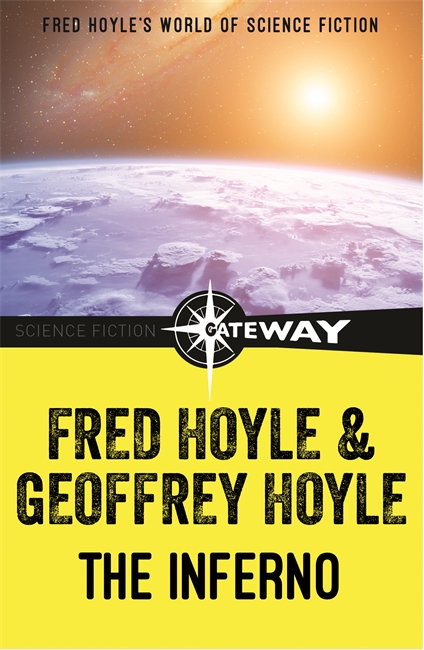
Cameron, a tall, testy, whisky-drinking, nationalist-minded, Scottish physicist, may not have been an astronomer, but he knew the off things in the sky when he saw them. From an Australian mountaintop where he was advising on the location of a radiotelescope he saw what looked like Mars, in the wrong spot in the sky. But it wasn't Mars at all, it was a supernova ... no, not a supernova but a quasar.
Knowing what would happen, Cameron dashed home to Scotland and found himself at a crossroads of his life. In the face of total catastrophe, and of intense heat, darkness and rain, he took over as natural leader with both the north and south of the United Kingdom turning to him for help.
Sir Fred Hoyle, world-renowned astrophysicist, and his son, Geoffrey Hoyle, have set their newest science fiction thriller not only in London and Scotland, but also at the University of Charlottesville, and in Australia as well.
The result is an intriguing, fast-paced novel written with a wry humour and offering some fascinating glimpses of and gibes at astronomy.
Knowing what would happen, Cameron dashed home to Scotland and found himself at a crossroads of his life. In the face of total catastrophe, and of intense heat, darkness and rain, he took over as natural leader with both the north and south of the United Kingdom turning to him for help.
Sir Fred Hoyle, world-renowned astrophysicist, and his son, Geoffrey Hoyle, have set their newest science fiction thriller not only in London and Scotland, but also at the University of Charlottesville, and in Australia as well.
The result is an intriguing, fast-paced novel written with a wry humour and offering some fascinating glimpses of and gibes at astronomy.
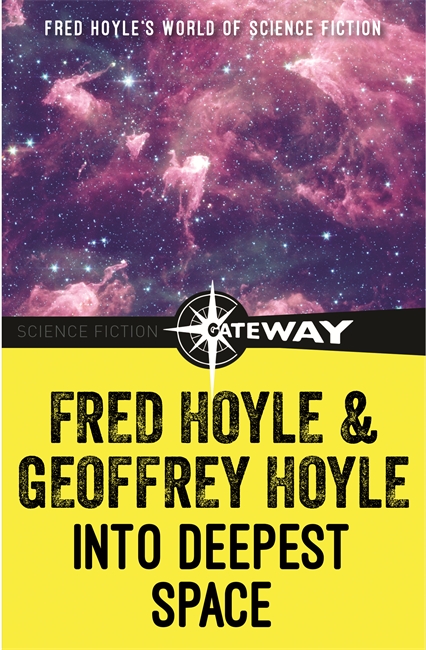
Sequel to Rockets in Ursa Major
From a great distance the Yela's recorded message crackled through on the micro-earpiece: 'For the time being you have won. But I am not defeated so easily.'
That had been three years ago, after Dick Warboys had repulsed the invading Yela by firing a lithium bomb into the Sun. But now that threat seems near fulfilment as appalled scientists detect the rapid approach of a vast, engulfing cloud of hydrogen. Can humanity survive on Earth or must selected pioneers abandon it in search of a safer region of the Galaxy?
To find the answer Dick and his allies from Space suffer a perilous voyage into the realms that reach the ultimate in understanding the physical universe.
From a great distance the Yela's recorded message crackled through on the micro-earpiece: 'For the time being you have won. But I am not defeated so easily.'
That had been three years ago, after Dick Warboys had repulsed the invading Yela by firing a lithium bomb into the Sun. But now that threat seems near fulfilment as appalled scientists detect the rapid approach of a vast, engulfing cloud of hydrogen. Can humanity survive on Earth or must selected pioneers abandon it in search of a safer region of the Galaxy?
To find the answer Dick and his allies from Space suffer a perilous voyage into the realms that reach the ultimate in understanding the physical universe.
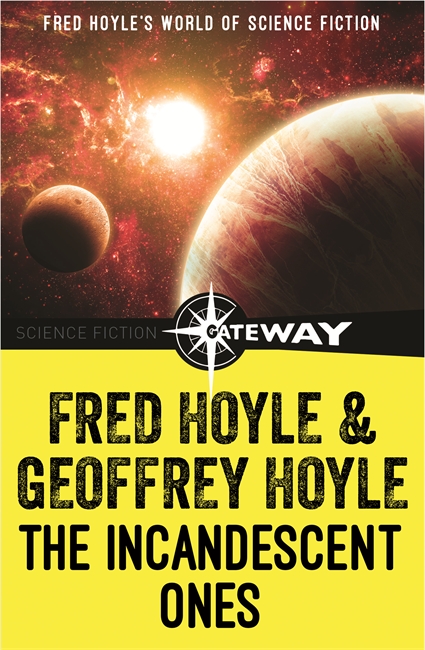
Young Peter, a student of Byzantine art forms at Moscow University, through a cryptic sentence in a lecture receives a message to buy two books of his choice at exactly 1.30 pm in the university bookstore. When he opens the package, a third book, 'The Life of Pushkin', a very special copy indeed, has been included. It is this third book that leads Peter to Armenia on a series of adventures of the sort that Fred and Geoffrey Hoyle know how to spin so skilfully and so spell bindingly. Peter's mission includes finding his father again after many years of separation. And from his father he receives the remarkable 'battery' - plus a very difficult task to perform.
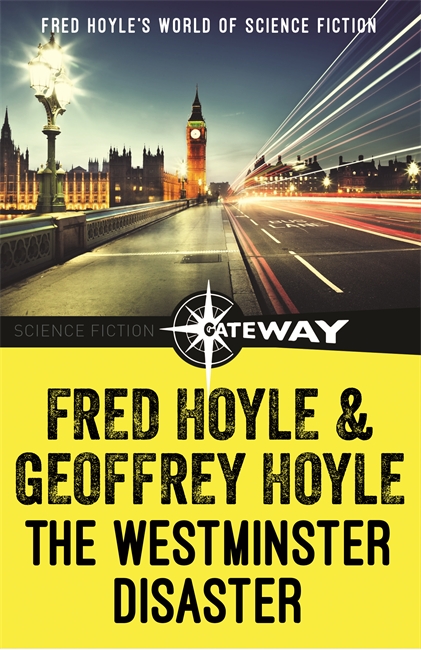
The Westminster Disaster is based on the present world shortage of high-grade uranium and the action turns on a Soviet threat to use nuclear blackmail against London.
When the British Ambassador to the U.N. seeks to veto a Soviet demand for sanctions against South Africa, the threat becomes a hideous reality.
Writing from a position of intimate knowledge of advanced trends in research and science administration, in this novel the Hoyles give vivid expression to their deep fears about the present world situation and about carefully laid plans for Soviet domination...
When the British Ambassador to the U.N. seeks to veto a Soviet demand for sanctions against South Africa, the threat becomes a hideous reality.
Writing from a position of intimate knowledge of advanced trends in research and science administration, in this novel the Hoyles give vivid expression to their deep fears about the present world situation and about carefully laid plans for Soviet domination...
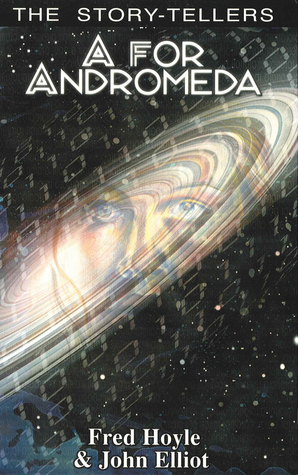
'A thrilling book ... like early Wells at his best'
New Statesman
As soon as a strange dark patch in the sky is spotted by a young astronomer,
it is clear something is wrong. The huge black cloud is unlike anything he has ever seen - and it's headed straight for the solar system. If it continues on its course, it will block out the sun's rays
and wipe out life on Earth. As panic and riots ensue, desperate world leaders assemble a crack team of scientists - including the maverick Professor Kingsley, the pipe-smoking Doctor Marlowe and the taciturn Russian Alexandrov - to stop the cloud. But as they discover more about its true nature, they are forced to rethink everything they know about humankind's place in the Universe.
In The Black Cloud, renowned astronomer Fred Hoyle blends scientific expertise with a gripping apocalyptic thriller, to create a frighteningly real picture of a planet facing extinction.
New Statesman
As soon as a strange dark patch in the sky is spotted by a young astronomer,
it is clear something is wrong. The huge black cloud is unlike anything he has ever seen - and it's headed straight for the solar system. If it continues on its course, it will block out the sun's rays
and wipe out life on Earth. As panic and riots ensue, desperate world leaders assemble a crack team of scientists - including the maverick Professor Kingsley, the pipe-smoking Doctor Marlowe and the taciturn Russian Alexandrov - to stop the cloud. But as they discover more about its true nature, they are forced to rethink everything they know about humankind's place in the Universe.
In The Black Cloud, renowned astronomer Fred Hoyle blends scientific expertise with a gripping apocalyptic thriller, to create a frighteningly real picture of a planet facing extinction.
Non Fiction
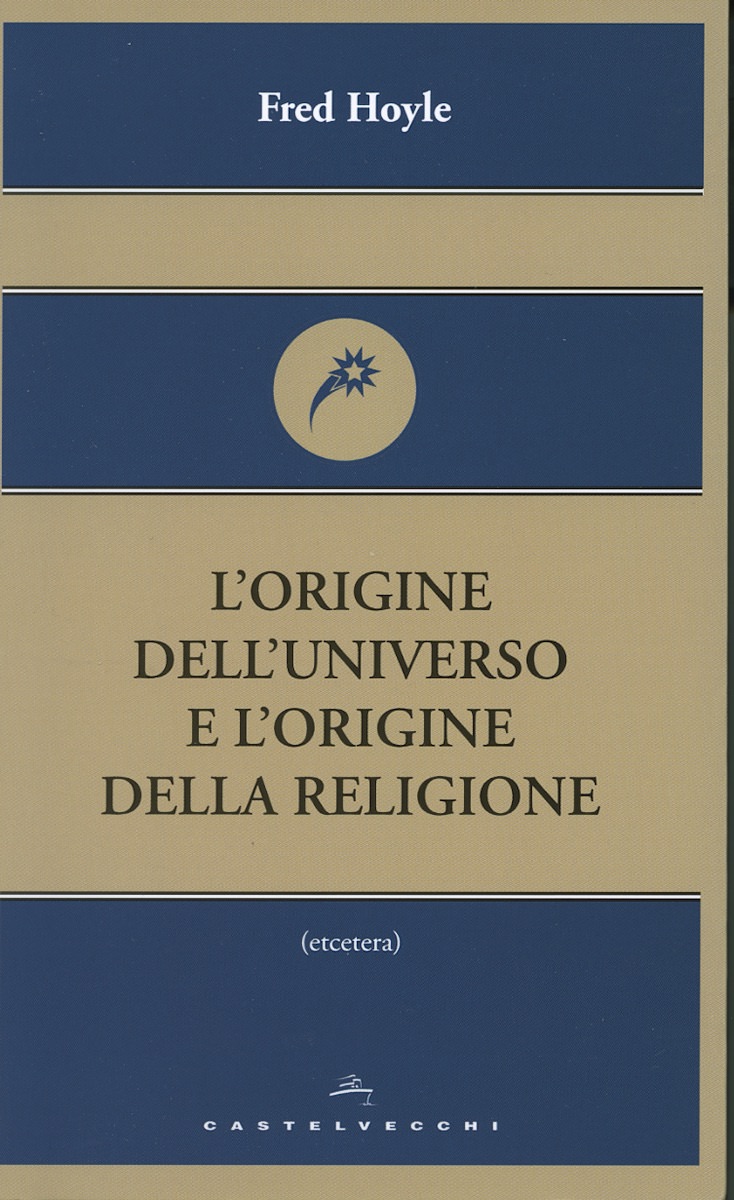
Il passaggio periodico delle comete, con le sue catastrofiche conseguenze, non ha soltanto inciso sull'aspetto fisico del pianeta, ma ha indirizzato la storia dell'umanità, segnandone i punti di svolta. Questa la tesi esposta dall'astrofisico Fred Hoyle nella celebre conferenza pronunciata alla Frick Collection di New York nel 1993. Limpido, ironico e incalzante, lo scienziato affronta ed estende il tema delle origini; lo fa con l'abilità narrativa del divulgatore ispirato e con il tono di sfida dello studioso attento a diffidare delle opinioni consolidate. Hoyle spiega come le esplosioni di bolidi a contatto con l'atmosfera e le piogge di meteoriti abbiano posto fine alla glaciazione, permettendo l'inizio della civiltà, e siano state all'origine di una scoperta fondamentale come la fusione dei metalli. Le comete hanno poi lasciato il segno sui miti omerici, gli eventi biblici e la forma delle piramidi; e hanno influito in maniera decisiva sulla caduta di Roma e sull'ascesa dei monoteismi. Si delineano così gli elementi per un possibile fondamento scientifico della Storia, e l'opportunità di non trovarci impreparati, tra un secolo, di fronte al prossimo impatto previsto.